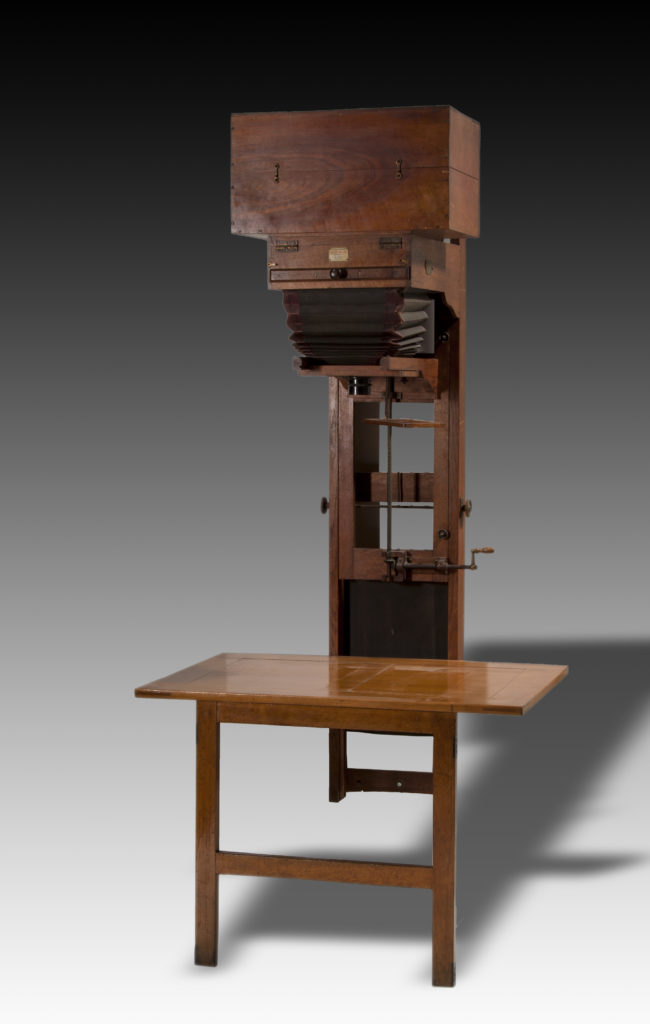The photographer’s laboratory circa 1900
The increase in the sensitivity of photographic papers from the middle of the 1880s associated to new gas or electrical light sources, particularly of those of the “Gaslight” type, finally made the practice of negative enlargement available on a mass scale.
People generally admitted that the process of enlargement could only have been achieved thanks to gelatine bromide papers, which had a reputation for being more sensitive than their predecessors… A number of testimonies revealed that it had been practised from time to time since the 1850s.
The French optician Noël Paymal Lerebours was said to be the first to have experimented with enlargement, as early as 1853. In 1855, Auguste Bertsch managed to make enlargements of a series of four images, “the white barrier” from negatives around 7cm long on their side, in order to test a new chemical recipe. He was the designer of the small metallic camera which had taken these pictures, as well as of the accompanying enlarger, the solar “Magnascope”.
In around 1860, the Belgian photographer Desiré van Monckhoven, whose contribution to photography was considerable, designed a solar reflector enlarger (a mobile mirror which moved according to the trajectory of the sun), an improved version of the one which the American David Woodward patented in Baltimore in 1857, based on the principle of a magic lantern whose light source was sunlight. During the 1860s, Edouard Delessert, a French photographer from the Vaud, also developed his images using a solar enlarger.


